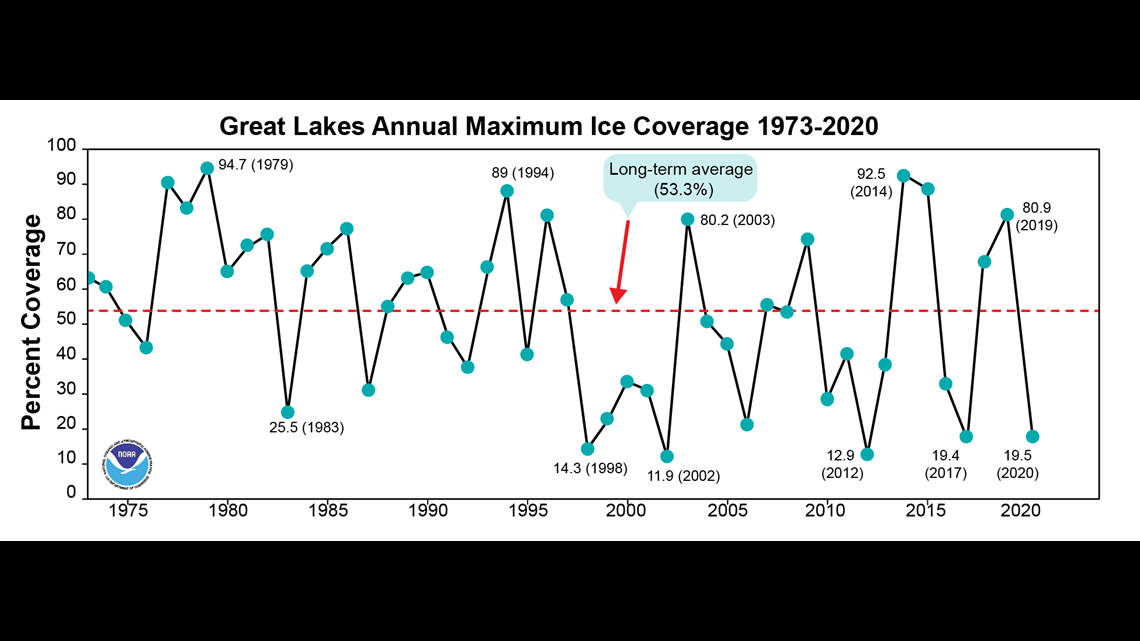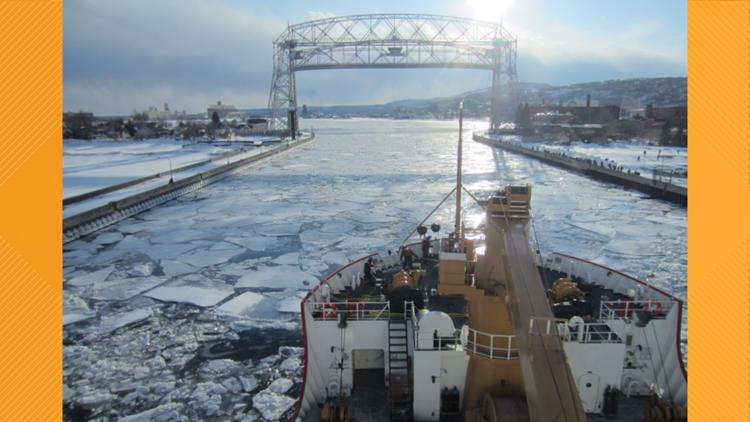BUFFALO, N.Y. — Compared to last winter, signs point to there being more ice coverage over the Great Lakes this winter.
In a report released late Thursday, scientists at the National Oceanic and Atmospheric Administration (NOAA) revealed that there's a better chance for more ice coverage over the Great Lakes this winter. Their projections include a maximum ice coverage of 30 percent for the Great Lakes in total by late February-early March.
This is almost twice as much ice coverage compared to last winter's 19.5 percent for the season.
Specifically to Western New York, they're calling for more than 60 percent of Lake Erie to freeze over this winter. This is the greatest of the five lakes thanks to, in part, how shallow the lake by comparison. And for Lake Ontario, only 7 percent for ice overage this time around.
To determine these ice coverage projections, NOAA scientist at the Great Lakes Environmental Research Laboratory use experimental seasonal ice forecast models and clues from other climatological factors. Any broad scale influence from teleconnection patterns such as El Nino Southern Oscillation and North Atlantic Oscillation, among others, can shift the jet stream over North America, resulting in either more or less ice coverage each winter season.


Great Lakes ice coverage is one of the more variable factors of each winter for the region. While this 2021 winter projection is higher than 2020, it's still much lower than the two maximums observed in 2018 (70 percent) and 2019 (81 percent). In general, signs point to a long term decline in maximum ice coverage for the Great Lakes driven likely by climate change.



